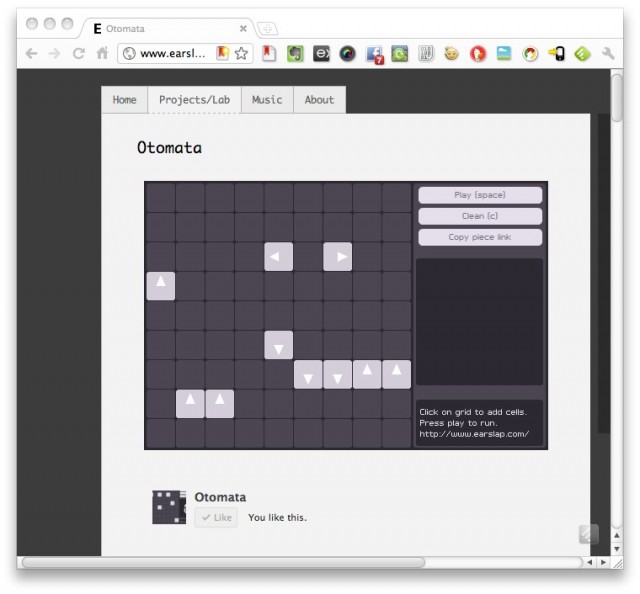Behold the power of the Web: composition ideas become a tool, a tool becomes a means for even casual users sharing musical sketches, and a browser toy can be a window into a Turkish sound artist breeding musical DNA like some people breed strains of flowers.
Otomata is a simple generative online grid-based sequencer, owing to a number of step sequencers and Toshio Iwai’s Tenori-on, with some beautiful circular visualizations of the resulting sounds. I’m late in posting it, but in a way, that’s a good thing – in the time that this sequencer has spread around the Web, it’s spawned a small army of casual musicians producing their own videos and patterns.
And that brings me to an observation. In all the discussion of “apps” versus the Web – a discussion as old as the network itself, having appeared as “cloud computing” and various other forms before – people may be missing the point. Right now, Otomata is not an app, though iPhone/iPad and Android versions are reportedly in the works. It runs as a Flash file, which gives pretty much anyone access to it (including the majority of people on the planet who still don’t have either an iOS or Android device).

But it’s Web sharing that’s already making it powerful – people sending around links, sharing creations, and showing friends. App or not, the Web is what makes software successful these days, through YouTube views, blog posts like this one (ahem), and even casual “look what’s on my screen” sharing that results in the exchange of a URL anyone with a browser can run. Flash may not be the best rich tool the Web has ever seen, but it’s only the means to an end – the end being getting things in a connected browser.
Want further evidence? Look no further than the Facebook page, or better yet, open discussion on Reddit:
http://www.reddit.com/r/otomata/
Great design, embodying musical sense in the structure of the tool itself, makes this a hit. And for that, you can thank “computational sound artist” Batuhan Bozkurt of Istanbul. His musical expression is generally procedural by nature, expressed as a set of rules in compositional form. Check out his terrific video on this work, as built in the open source tool SuperCollider.
If you can tear yourself away from playing with this wonderful toy, you can get deep into genetic code for musical composition and spectacular SuperCollider creation.
http://www.earslap.com/projectslab
Rapid iteration? Quick contagian? Generational evolution? Hmmm… sounds a bit like what’s happening on a larger level as creations like this spread around the Web. But it’s a heck of a lot more fun than genetic engineering … or the plague. So play away, Internets.
Tons of additional information and goodness on Batuhan’s site:
http://www.earslap.com/projectslab/otomata
Thanks to Max (and others) for the tip! (Max actually suggests trying this with multiple tabs open!)